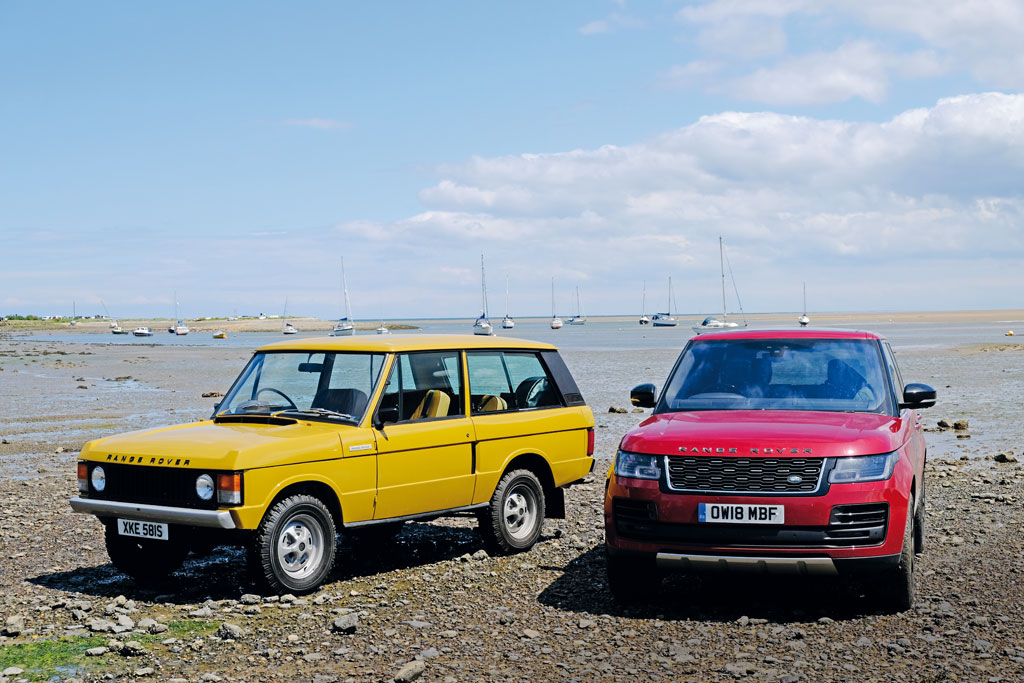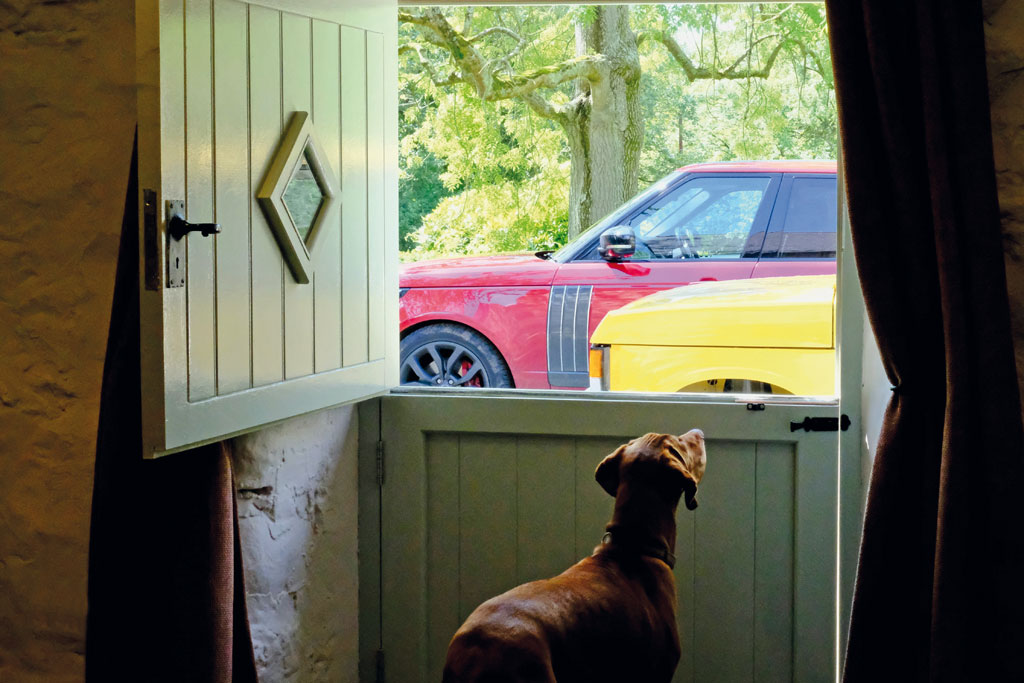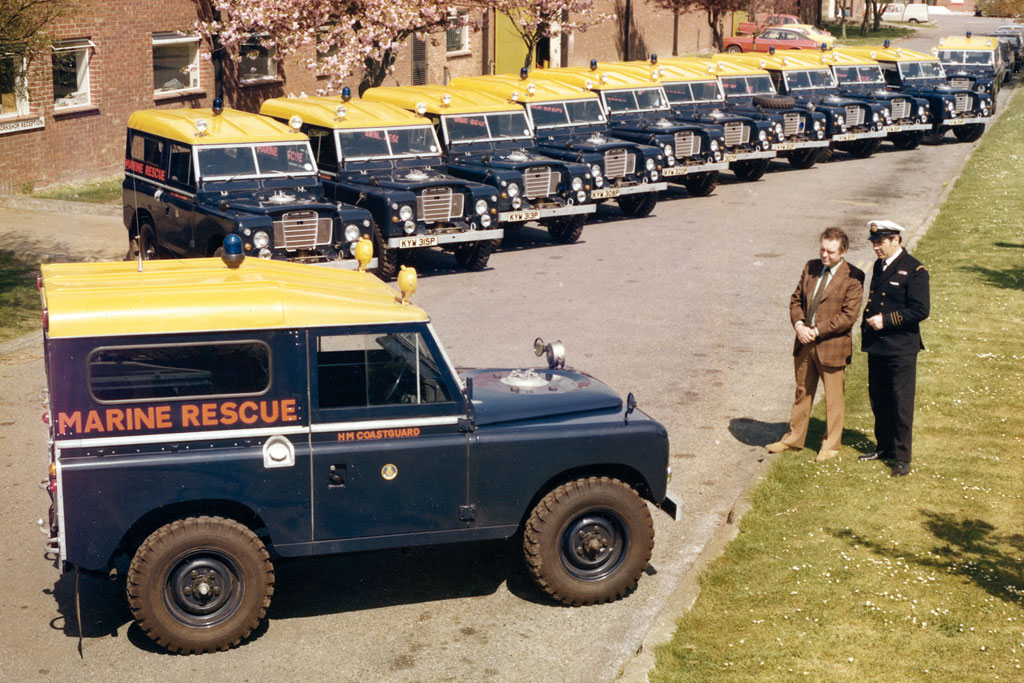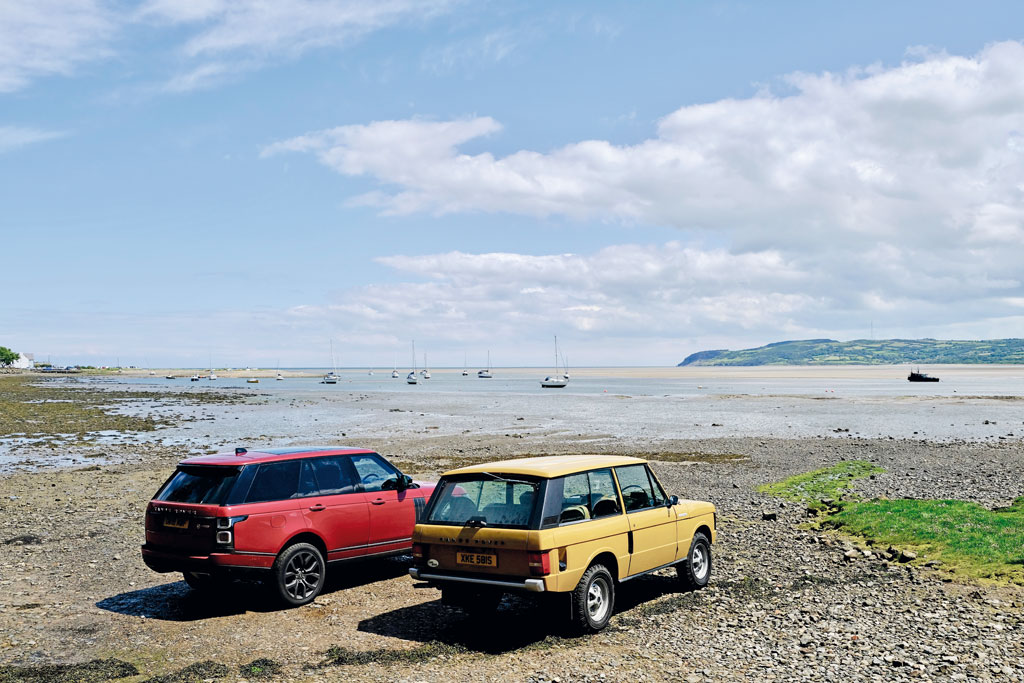Reborn To Run: An Epic Land Rover Excursion
C&TH's Motoring Editor journeys to the Isle of Anglesey in a ‘Reborn’ classic Range Rover...
This post may contain affiliate links. Learn more
Jeremy Taylor drives a 1978 ‘Reborn’ classic Range Rover to the exact spot where the Land Rover story began 70 years ago…
At first sight it appears an unlikely location for the birth of an icon: a sandy inlet blasted by winds from the Irish Sea. But Red Wharf Bay on the Isle of Anglesey is now a mecca for motoring enthusiasts around the world. There are no explanatory signs or markers, but this is where the seed of the Land Rover legend was planted. One of the world’s most recognisable and capable vehicles, it was first sketched out with a stick in the sand, right here on a Welsh island.
In 1947, Maurice Wilks was an established chief engineer at the Rover Company and enjoyed a passion for the countryside. After WWII, he split his time between his home in Warwickshire and a farm not far from Red Wharf Bay. The fields were often slippery and wet, so Wilks used an army surplus Jeep left over from the war to scrabble around the estate. He realised it would be much more effective if only he had a machine specially designed for the job and so, together with his brother, Spencer, Rover’s MD, they dreamed up the now-legendary, all-purpose utility vehicle.
As the pair walked the beach discussing their plan one day, Maurice found a stick and famously drew out the shape of his ‘vehicle to rove the land’, as his brother looked on. This apparently innocuous moment produced what has since become one of the most well-known design sketches in automotive history.
The first Land Rover was launched at the Amsterdam Motor Show less than year later, on 30 April, 1948. Later known as the Series I, it was powered by a 1,595cc petrol engine and cost a modest £450. By 1949, the British Army had ordered its first trial batch, while the royal family took delivery of theirs in 1953 (the Land Rover Defender became a favourite of the Queen).
Updated and improved models followed, but it wasn’t until 1970 that Land Rover went a step further and created the world’s first luxury SUV, the Range Rover. One of the few vehicles to deliver permanent four-wheel drive, it was displayed at the Louvre in Paris that same year, as an exemplary work of industrial design.
Over time, the Range Rover has evolved into another design icon. Built with Land Rover’s trademark ‘go-anywhere’ facility, the latest top of the range SVAutobiography Dynamic (SVA-D) is a majestic drive at the very pinnacle of luxury motoring.
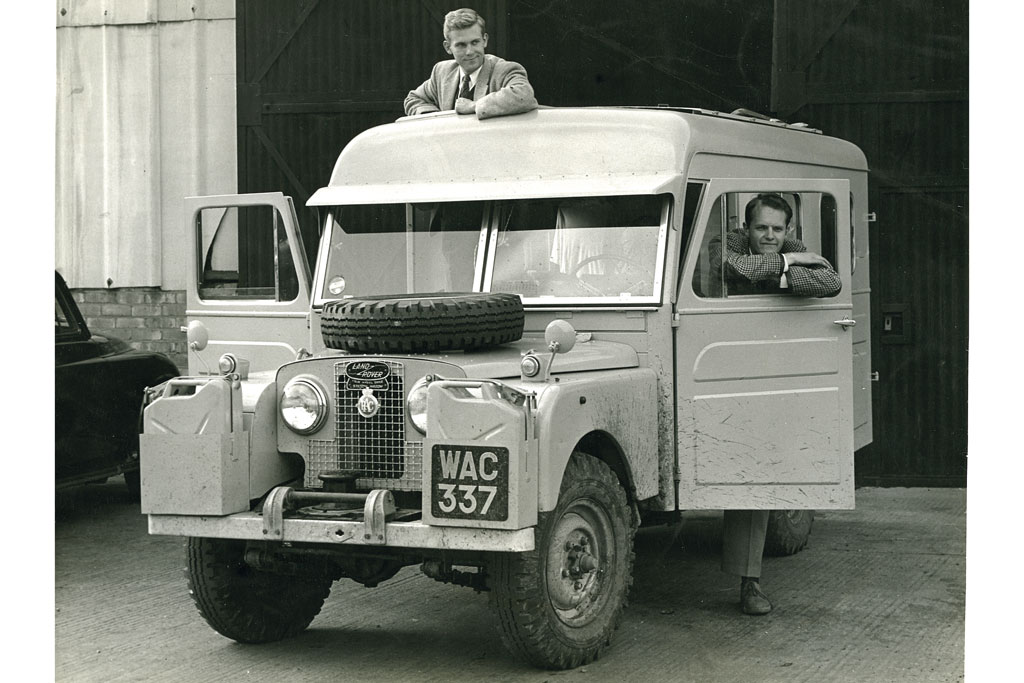
Robert Bateman and Bristol Foster drove the custom WAC 337 Land Rover over 60,000 km around the world
Two years ago Land Rover launched the Reborn programme for customers who want a restored, vintage Range Rover for their collection. Reborn revives highly collectible vehicles from the 1970s, using the company’s expertise to bring them back to the high standards of their original condition.
And today I’m embarking on a ‘Land Rover Experience’, driving the very first restoration car out of the workshop – a 1978 Range Rover Classic in the period colour of Bahama Gold. My Land Rover ‘instructor’ steers the new SVA-D alongside, a car capable of 0–62 mph in under six seconds, and equipped with every conceivable extra.
Our pilgrimage to Anglesey starts, appropriately, on the Fosse Way in the Cotswolds, since Range Rovers have always been built at the Solihull factory in Birmingham and new models are often trialled along this fast stretch of road, near Bourton-on-the-Water.
Starting our journey in style, we stay over at the 17th-century Slaughters Manor House, in one of the country’s prettiest villages. It is quintessential England, with sweeping lawns, stucco ceilings, Dubarry wellies on the doorstep and a dining room that promises an excellent cream tea. I sleep in Valentine, a gorgeous bedroom in the coach house, with an open fireplace, whopping four-poster bed and twin slipper baths. It’s a hotel that perfectly complements a Range Rover.
Next day it’s just four hours across country to the Isle of Anglesey. First stop is Eastnor in the Malverns, where for decades Land Rovers have been tested to the limit off-road. Still in use today, it’s now open to the public, who can hone their mud-slinging driving skills with an expert.
Driving northwards past Shrewsbury and Oswestry on the Welsh Borders, both old and new Range Rovers prove the perfect vehicles to tackle the twists and turns of Snowdonia National Park. Effortlessly comfortable, it’s clear these luxurious SUVs are infused with same DNA, despite being more than 30 years apart.
We spend a night near Pwllheli in the beautifully converted Stabal-Pernarth barn from Dioni, which sits in splendid isolation on the Llŷn Peninsula next to a historic medieval hall house, Penarth Fawr. It’s an idyllic retreat, just a brisk walk from golden beaches and Pwllheli Marina, a place Maurice Wilks would have approved of, with its roaring woodburner, cosy bedrooms and our brace of Range Rovers outside the stable door.
Fortunately, the tide is out next day when we reach our destination. Red Wharf Bay is a picture postcard of little boats marooned on the sand. Dogs splash through the rock pools and customers at the Ship Inn are enjoying a balmy summer’s afternoon in the pub garden.
Few walking the sands know of the motoring legend that has made this beach so significant to enthusiasts. The bay remains relatively untouched, little different to when Wilks first etched his design. Yet, with a new Land Rover Defender just launched at the Festival of Speed, some surely realise they’re stepping in the footprints of a motoring great.
STAY: The Slaughters Manor House, Bourton-on- the-Water, slaughtersmanor.co.uk; Stabal-Penarth Barn, Pwllheli, dioni.co.uk.
DRIVE: landroverexperience.co.uk; landrover.co.uk
Range Rover Landmarks
1970 Original two-door Range Rover Classic goes on sale.
1972 Range Rover crosses Darien Gap on the 18,000-mile British Army Trans-America expedition.
1979 A Range Rover wins the inaugural Paris-Dakar rally (and again in 1981)
1981 First production of the four-door Range Rover appears, along with the first factory limited edition – the ‘In Vogue’
1994 Second-generation Range Rover introduced
2001 Third-generation Range Rover introduced
2002 500,000th Range Rover produced at the Solihull plant
2012 Fourth-generation Range Rover introduced – the first all- aluminium SUV
2016 Range Rover SVAutobiography launched
2017 First ‘Reborn’ restored Classic available from Land Rover
READ MORE:

